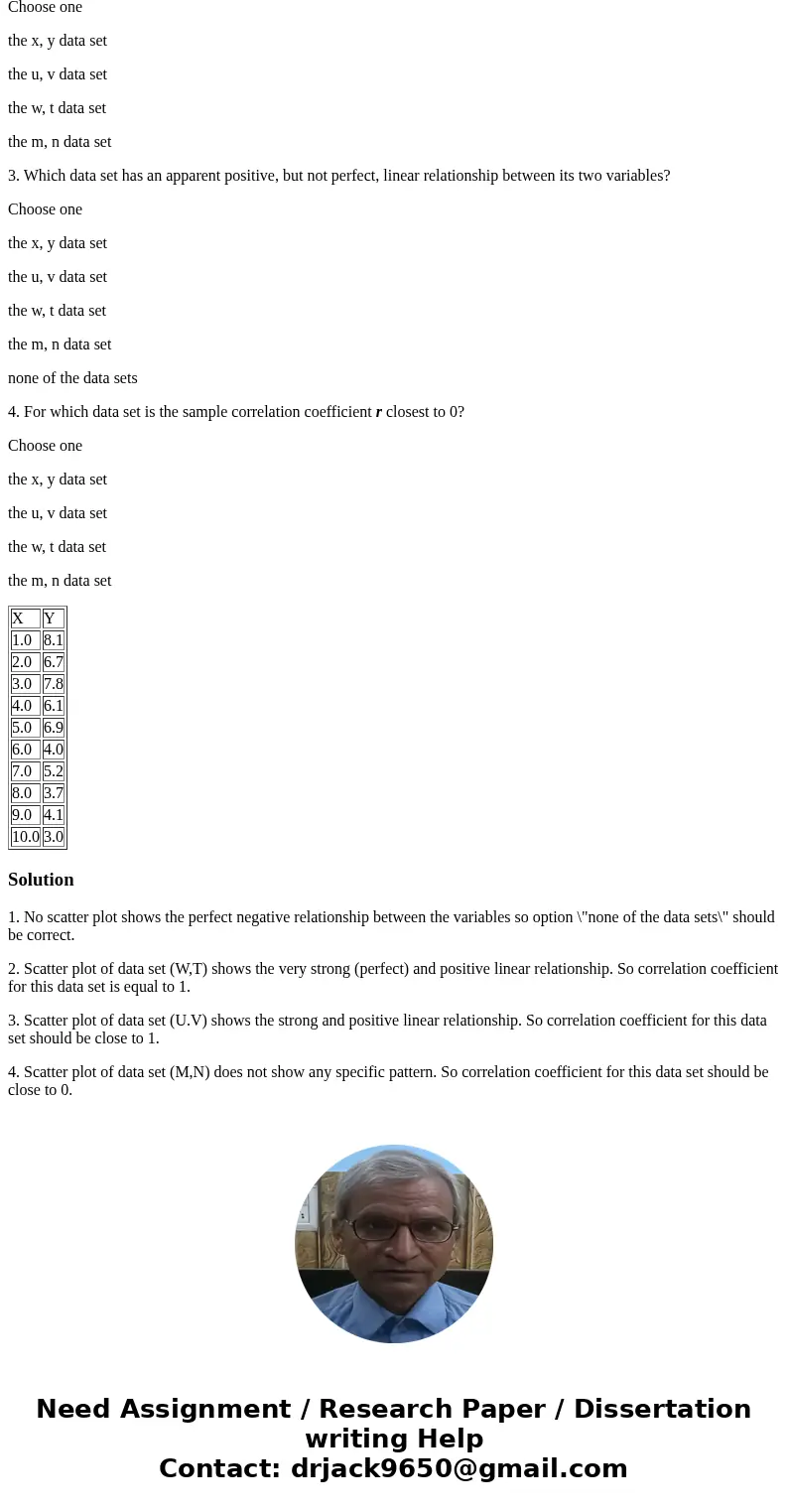Below are four bivariate data sets and the scatter plot for
Below are four bivariate data sets and the scatter plot for each. (Note that each scatter plot is displayed on the same scale.) Each data set is made up of sample values drawn from a population.
Figure 2
Figure 3
Figure 4
9.9
1. For which data set is the sample correlation coefficient r equal to -1?
Choose one
the x, y data set
the u, v data set
the w, t data set
the m, n data set
none of the data sets
2. Which data set indicates the strongest positive linear relationship between its two variables?
Choose one
the x, y data set
the u, v data set
the w, t data set
the m, n data set
3. Which data set has an apparent positive, but not perfect, linear relationship between its two variables?
Choose one
the x, y data set
the u, v data set
the w, t data set
the m, n data set
none of the data sets
4. For which data set is the sample correlation coefficient r closest to 0?
Choose one
the x, y data set
the u, v data set
the w, t data set
the m, n data set
| X | Y |
| 1.0 | 8.1 |
| 2.0 | 6.7 |
| 3.0 | 7.8 |
| 4.0 | 6.1 |
| 5.0 | 6.9 |
| 6.0 | 4.0 |
| 7.0 | 5.2 |
| 8.0 | 3.7 |
| 9.0 | 4.1 |
| 10.0 | 3.0 |
Solution
1. No scatter plot shows the perfect negative relationship between the variables so option \"none of the data sets\" should be correct.
2. Scatter plot of data set (W,T) shows the very strong (perfect) and positive linear relationship. So correlation coefficient for this data set is equal to 1.
3. Scatter plot of data set (U.V) shows the strong and positive linear relationship. So correlation coefficient for this data set should be close to 1.
4. Scatter plot of data set (M,N) does not show any specific pattern. So correlation coefficient for this data set should be close to 0.


 Homework Sourse
Homework Sourse